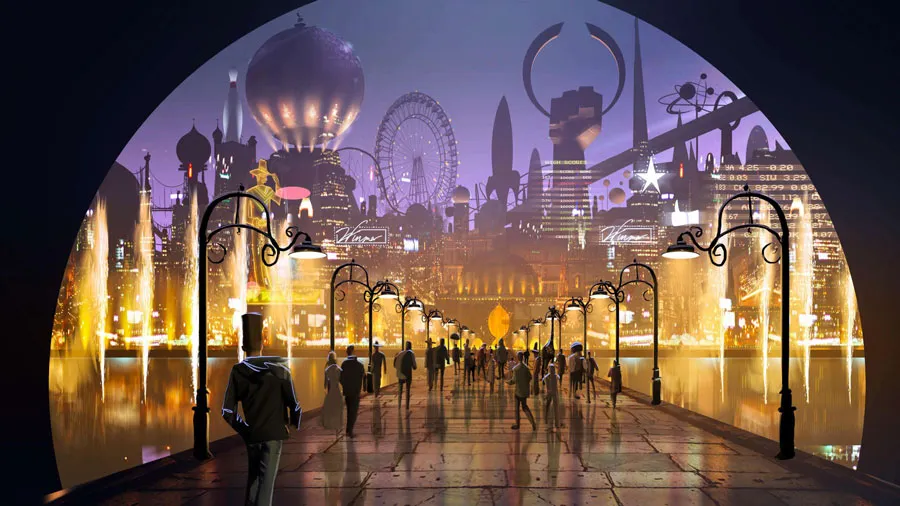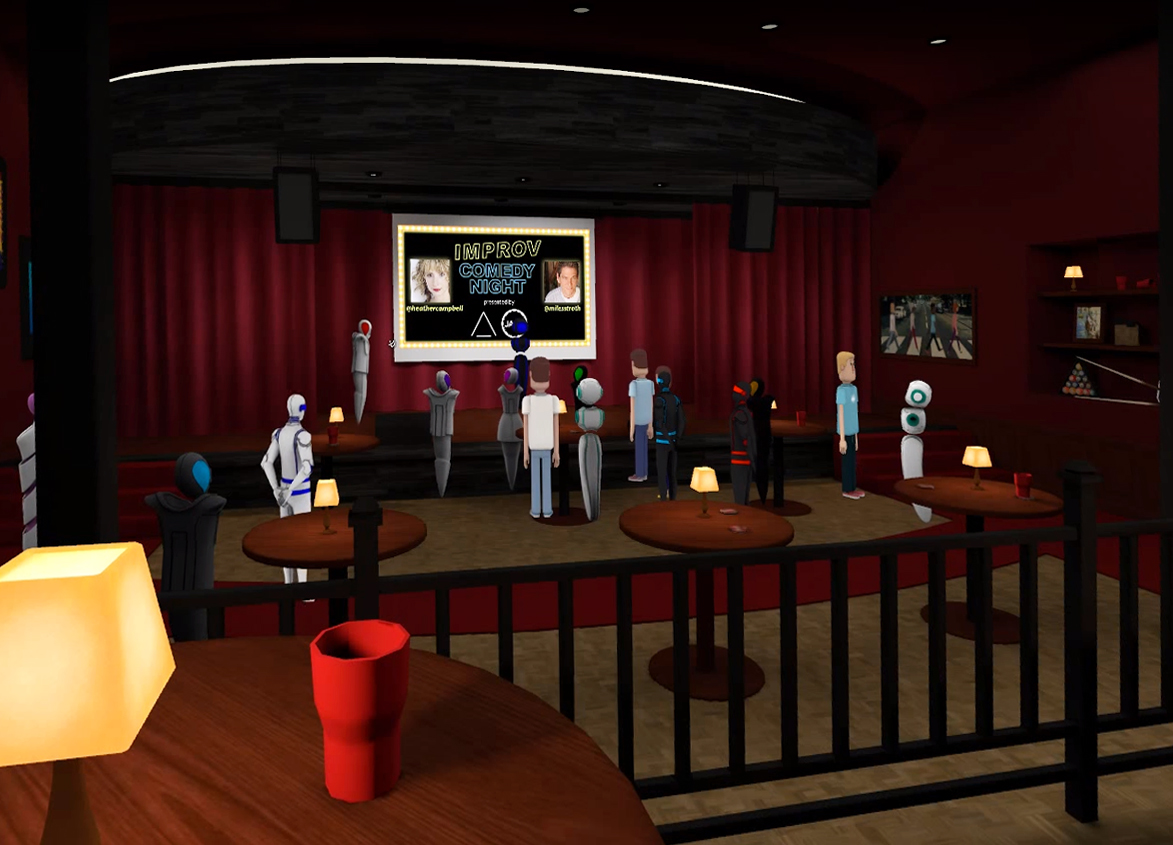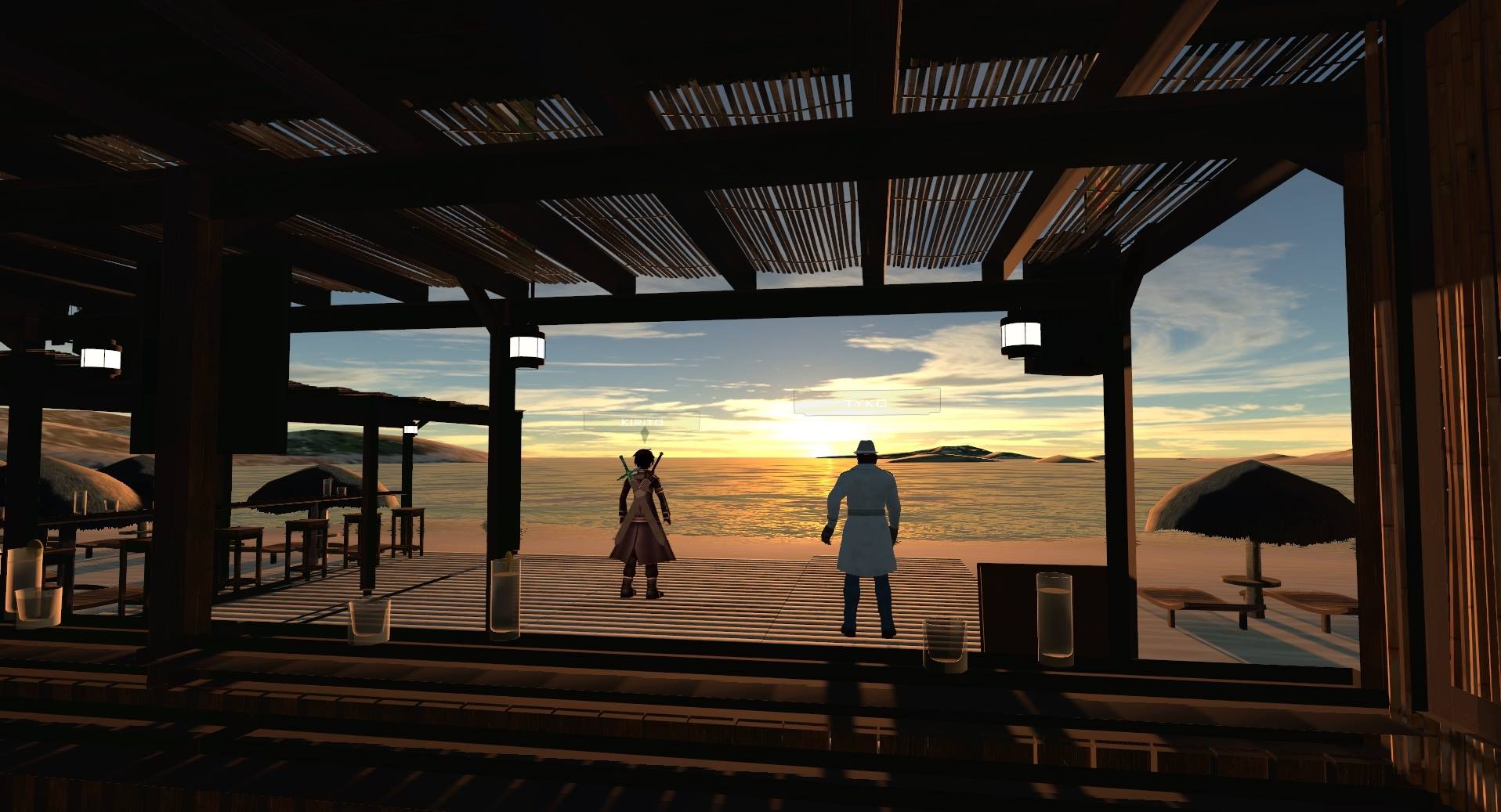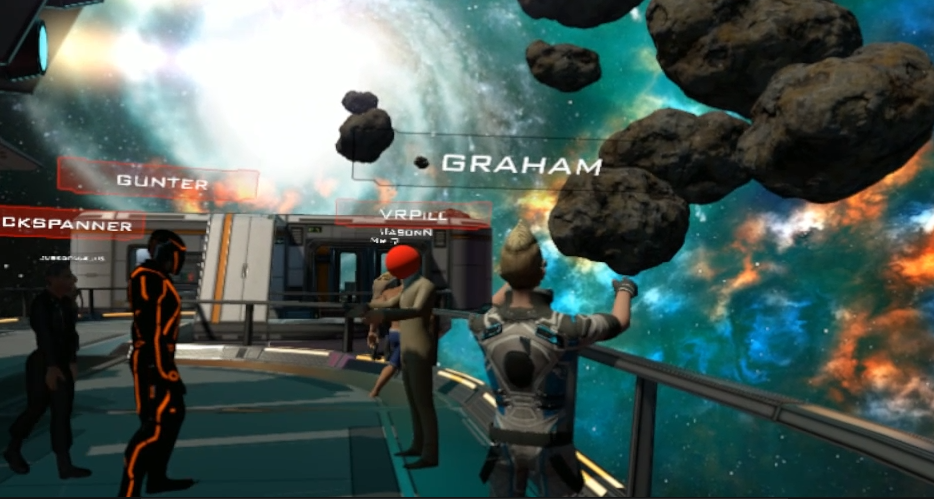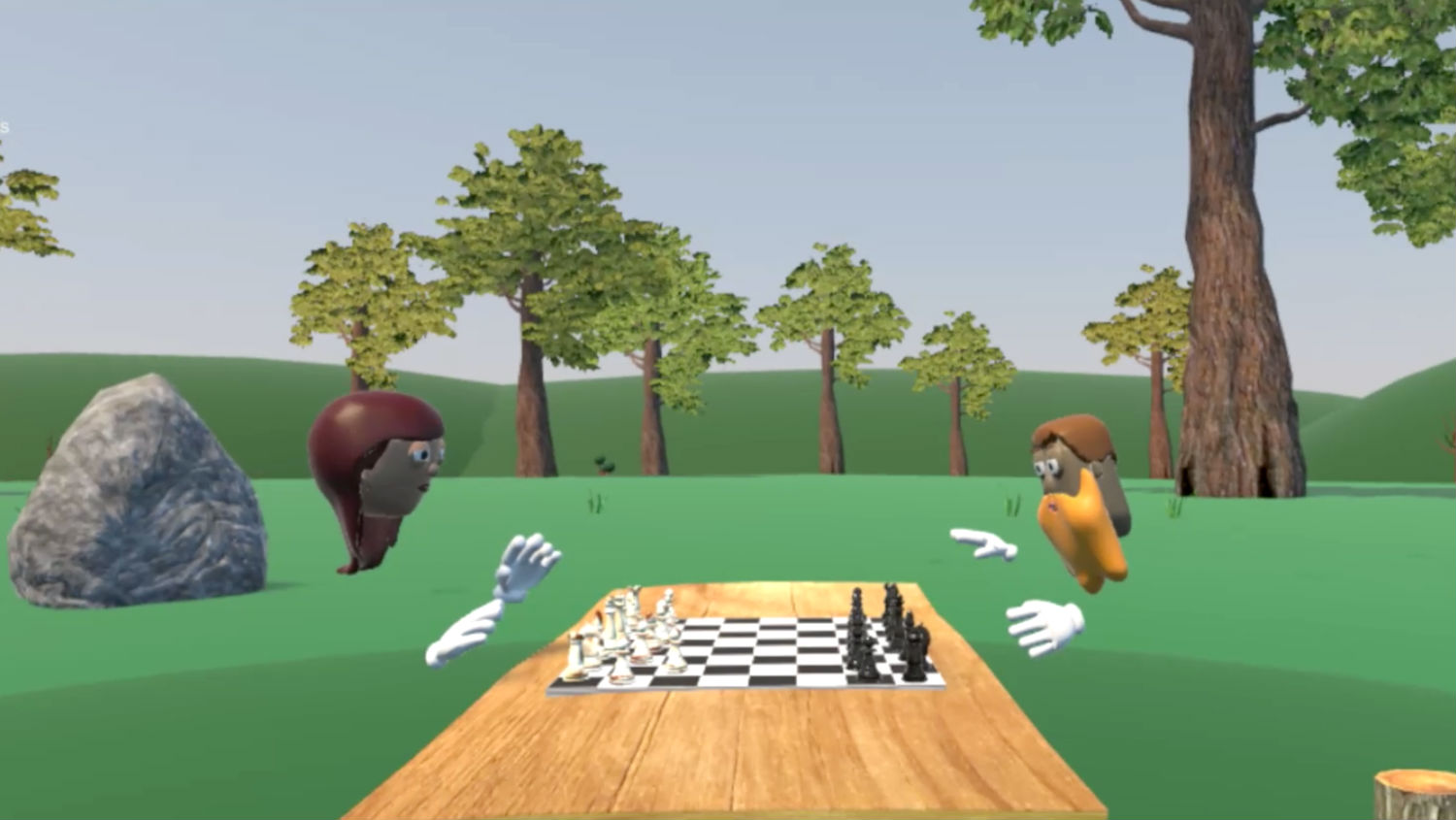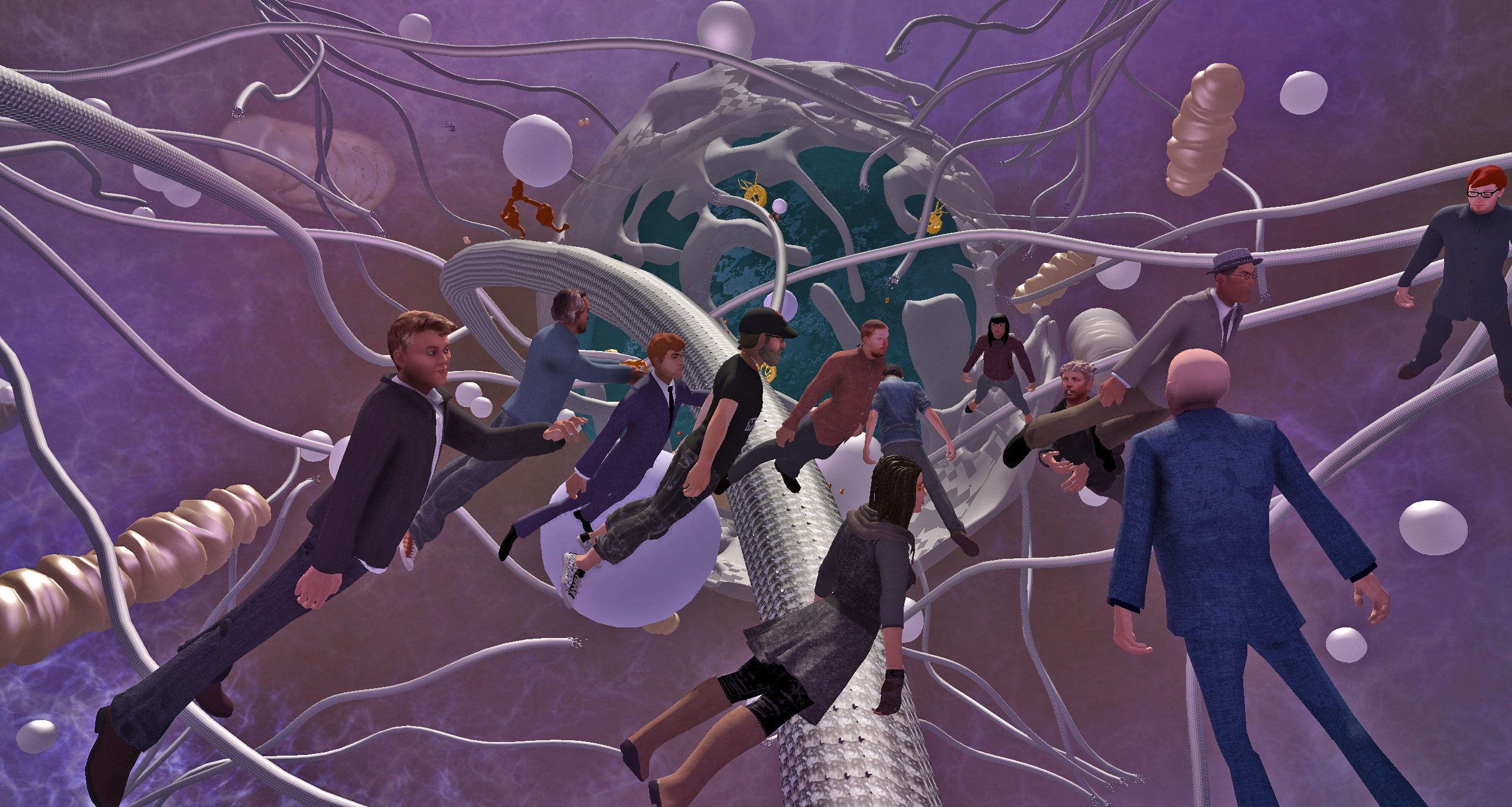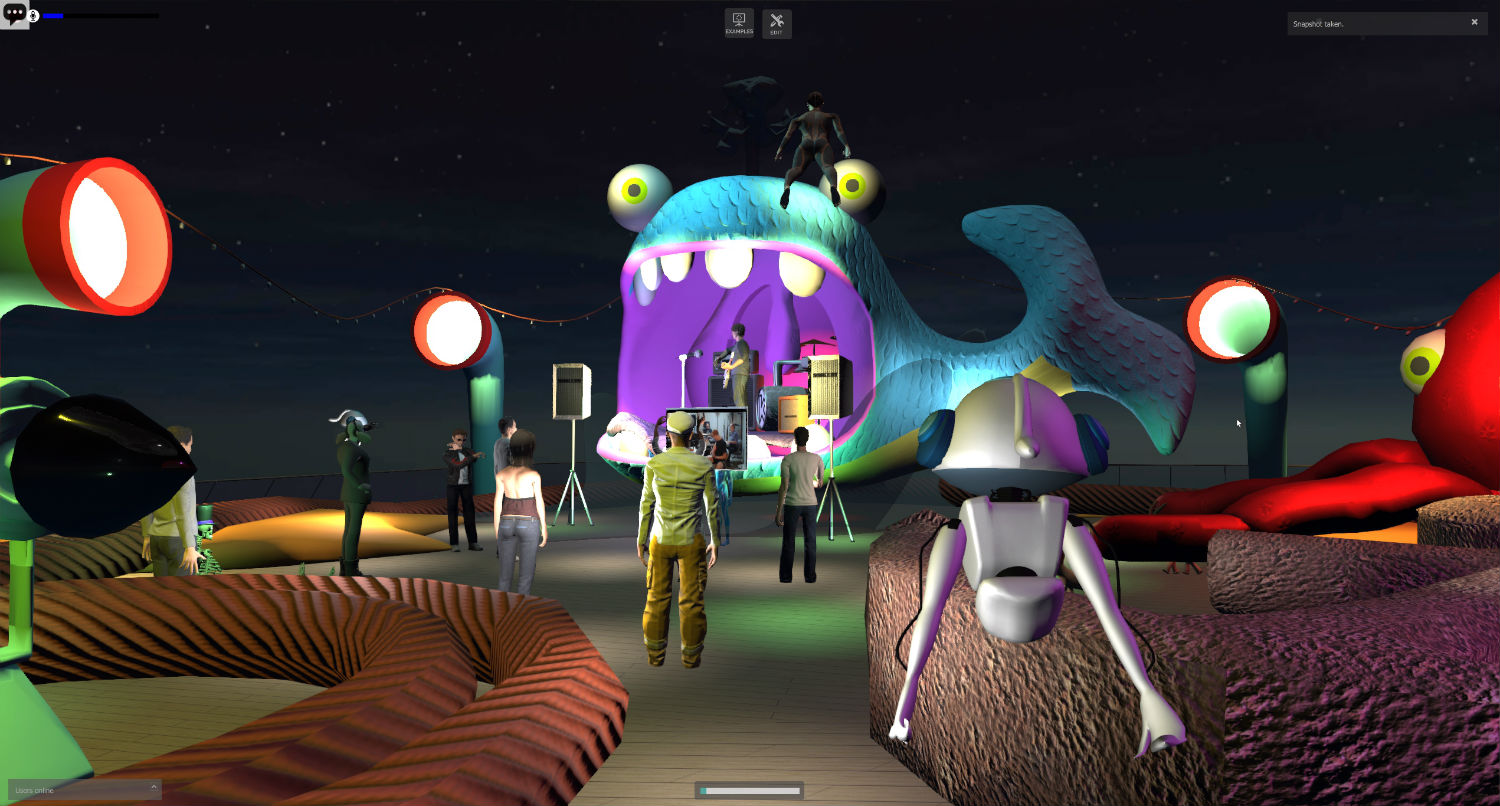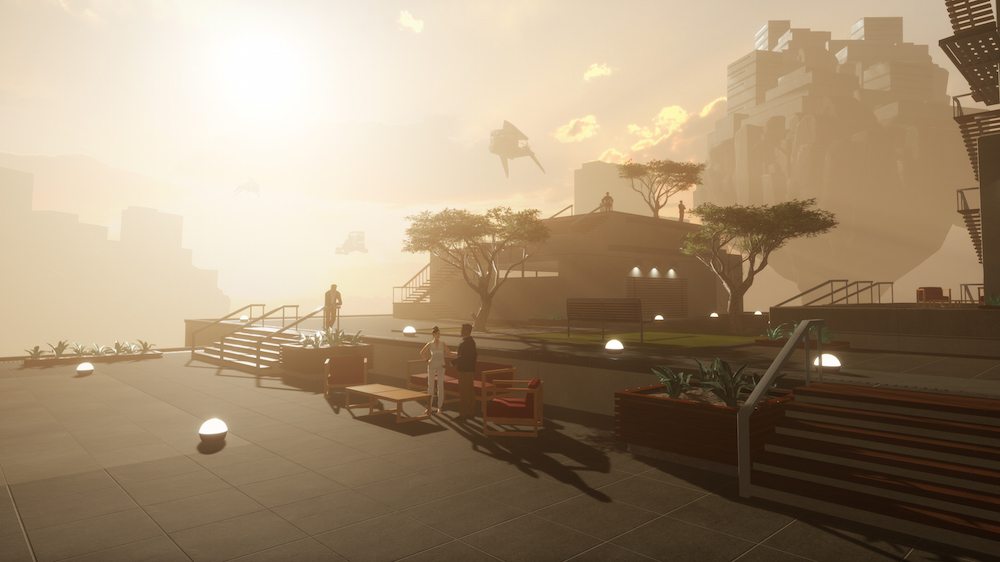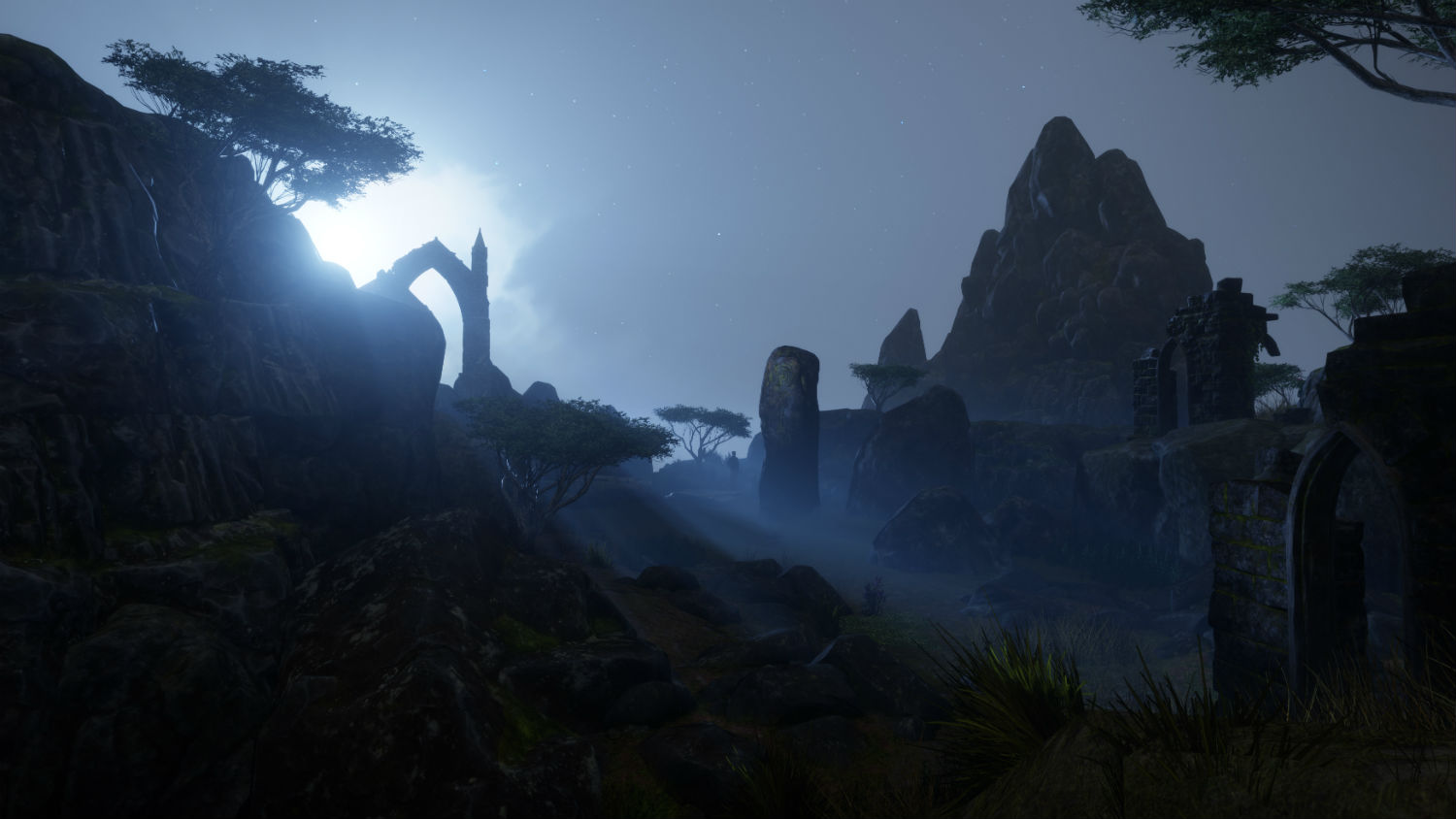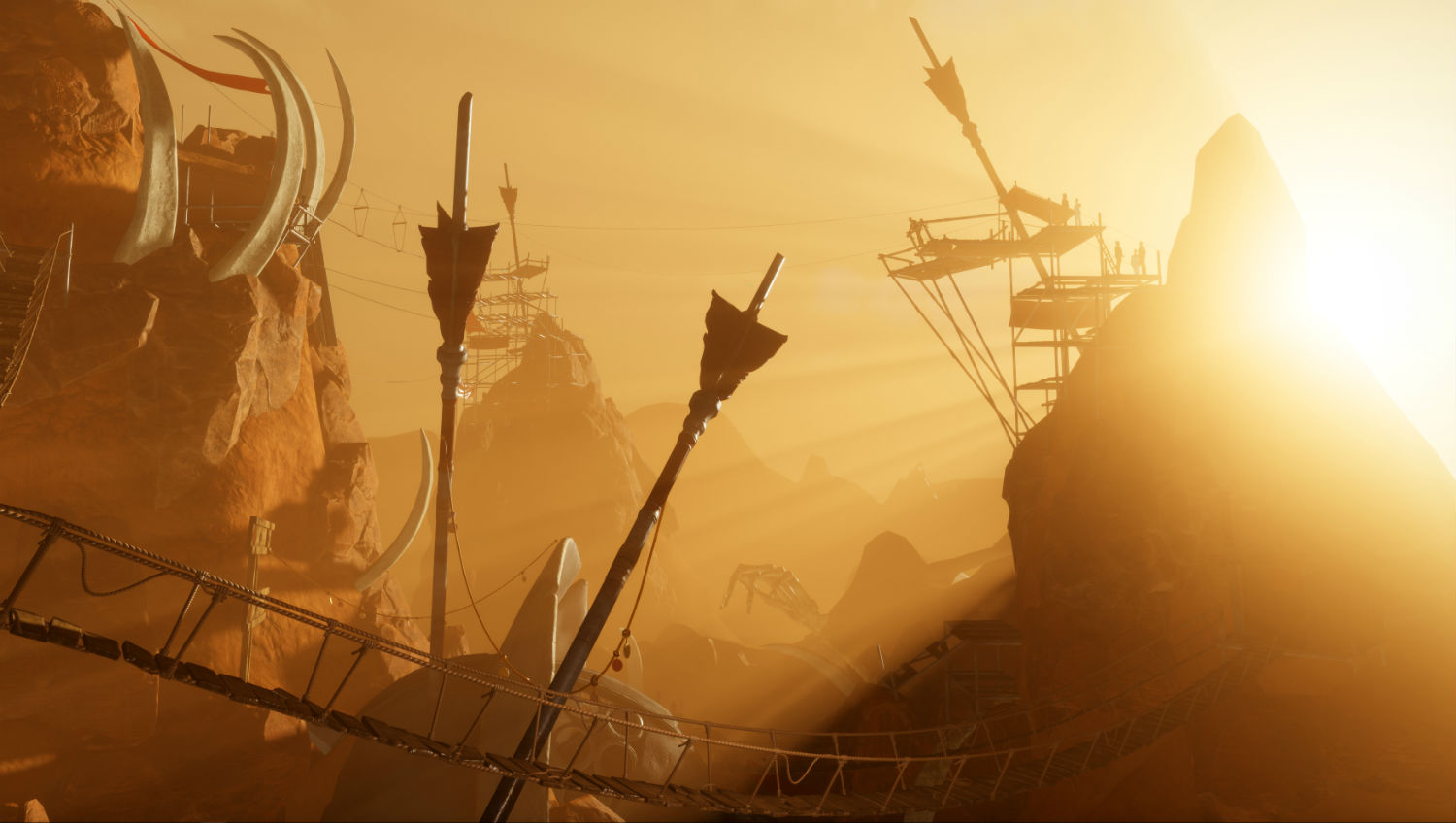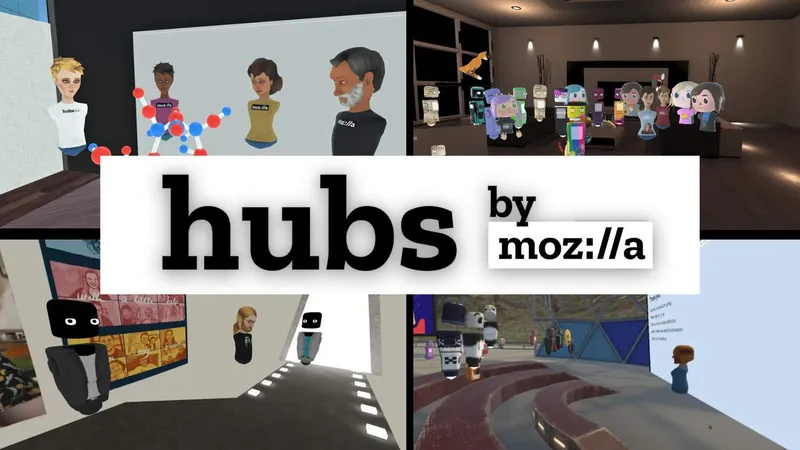Virtual Reality is quickly moving beyond novelty experiences and showing its potential for enabling new types of social interaction. But which platform(s) will be the one to make that happen? What sort of experiences will they enable, and will those turn out to be the kind of experiences we actually want?
It’s unlikely that VR will replace social media as such. In some ways social VR has more in common with offline experiences than it does with traditional social media. In VR, people come together and have natural conversations much as they would face-to-face, rather than communicating about the experience or sharing snippets of it. But as VR experiences become more commonplace, they will provide content that we will want to share through social media, much like our real-world experiences do. What we will need to figure out is how this interplay between existing social platforms and VR will play out.
The key question therefore is who will be “the Facebook of VR,” mainly because Facebook itself is keen to be just that, recently announcing a host of new Social VR features at Oculus Connect 3 (such as the ability to create “parties” and “rooms” where friends can gather together in VR), appointing Rachel Rubin – who previously worked on The Sims – as their Head of Social VR, and earmarking a $250 million budget to further VR development.
There’s still a huge opportunity for incumbents in that space though, and several platforms with big ambitions are gearing up to launch products that promise to enable user-generated content and social interaction in VR. We caught up with some of them to get a glimpse of what the virtual-social future might look like.
VR as a Communication Tool
AltspaceVR
Altspace VR is betting that the future of VR experiences will center around communications, and its CEO and Founder Eric Romo believes that Google’s Daydream will be the catalyst for that to happen on a large scale.
“As people get connected and have a network of VR friends, communicating with social VR could become commonplace. Most of our communication is with friends, colleagues, and family, and for specific purposes. With no indication that this will change, AltspaceVR developed a new UI (which launched in August) that makes it easier to start activities in VR with friends. Fundamentally, we are focused on people connecting with people they know to do things they would ordinarily do in real life. Have a game of chess. See a comedy show, watch some videos.”
They see VR fitting in between other forms of electronic communication on one side, and in-person meetings on the other. Romo says that when you want to connect with someone you will choose the most appropriate method – which could be text, videochat, phone or VR – and there will be more interplay between them as VR becomes pervasive. 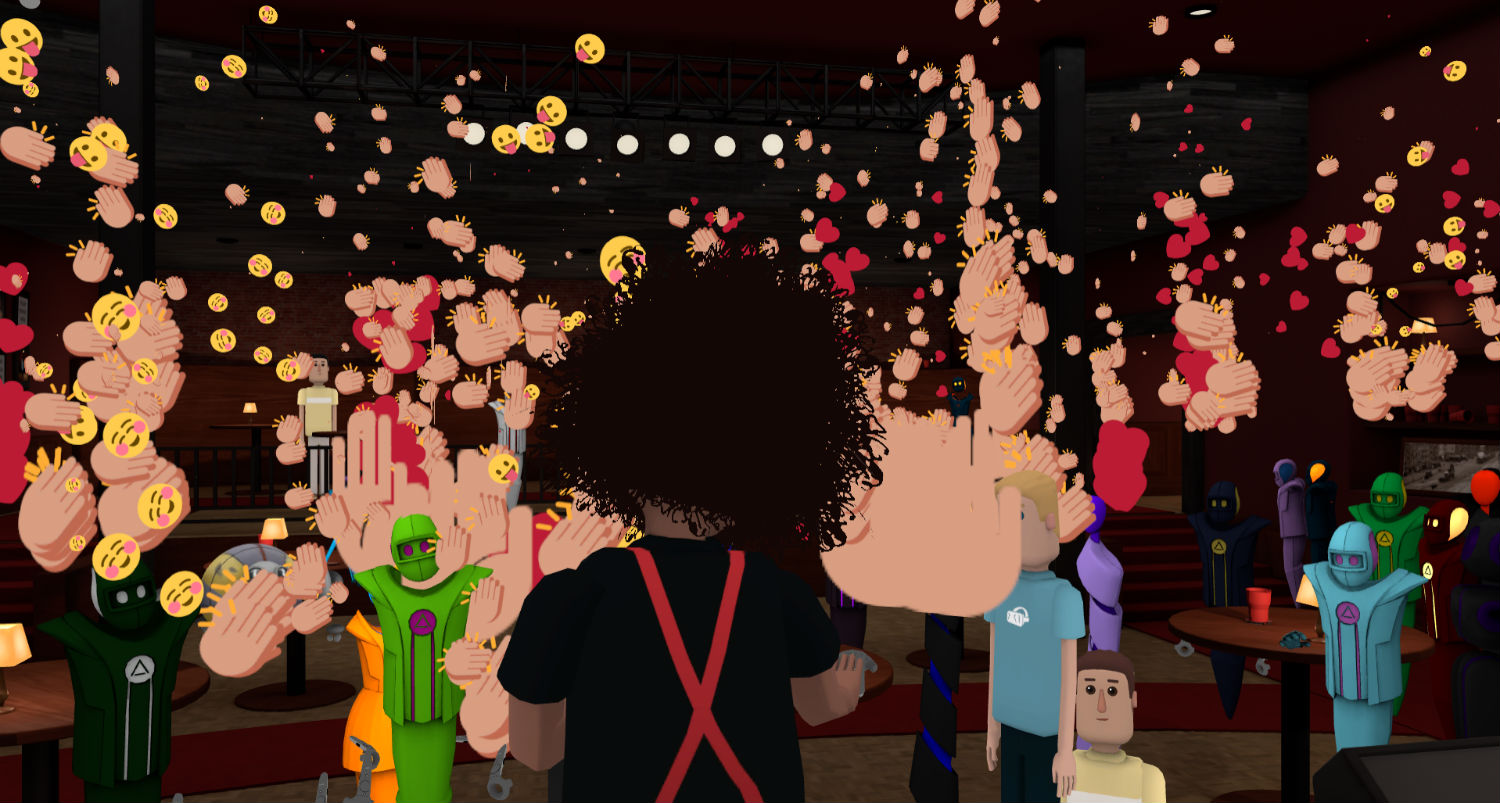
But while one side of Altspace VR is very much about those ordinary experiences, there is also a huge market in virtualizing extraordinary ones. Live events are a huge potential market for VR expansion; in the US alone, live music grossed nearly $10 Billion in revenue last year, which shows that fans are certainly willing to pay a premium for the experience of being in the presence of their favourite artists.
“The advantage of VR is that users can actually do things together. With our FrontRow technology we’re able to accommodate any number of participants simultaneously, and this has led to record-setting events. We are seeing the entertainment industry moving to adopt social VR. For example, NBC Universal developed Halcyon, a hybrid TV/VR series to bring fans from different countries together to view the premiere and interact live in VR with cast and crew members.”
VR can make such previously exclusive experiences easily available to a global audience, unrestricted by geographical location and venue capacity. This combination of unlimited reach with the sense of immediacy and personal connection – both with the artists and between fans – is what makes such social experiences so appealing.
VRChat
Although still in alpha, VRChat already has hundreds of fully fleshed user-created worlds. The next step is to make that creation process much more social and accessible, giving users clear and easy ways to share that content.
“We see enabling social creation and user-generated content as one of the bedrocks upon which Social VR will be built on, and want to give our users the power to completely mold their environments and avatars,” says their Chief Creative Officer Ron Millar.
The focus of their roadmap – which includes a major update planned for the end of this year – is on providing highly customizable avatars and environments.
“This style of democratized creation and massive social community has been proven to be incredibly powerful in games like Minecraft. There’s nothing quite like creating in real time with other people, Social Sculpting is a ton of fun!” says Millar.
VRChat sees their product integrating into social media platforms rather than competing directly with them, and is looking into ways of plugging into features such as Oculus Avatars, Touch and Audio SDK.
“We’re observing a trend that points toward an increasing number of users sharing on social media from within VR and linking back into VR from those same social platforms. Fully connecting with social networks such as Oculus, Steam and Facebook will help further open Social VR up to a broader audience,” predicts Millar, explaining that PlayStation VR and mobile integration are also a big part of their strategy: “The release of PlayStation VR will expose a player base of over 50 million people to VR, so we expect that will also push a lot more users into Social VR.”
Hardware developments such as self-contained, untethered headsets and powerful, more responsive hand controllers will accelerate the mass adoption of social VR, yet the real tipping point will only come when we’re able to feel truly present with friends in a virtual environment.
“When users have the ability to convey emotion without thinking about it the magic really happens,” Millar concludes. “Imagine being able to emote with your voice, face, hands and whole body! Add to that the ability to do wild and cool things that you can only do in VR and we’re going to see a revolution of communication.”
Endless Worlds
Improbable
Improbable’s unique feature, according to its CEO and Founder Herman Narula, is collaborative persistence. Just like in the real world, you’re all sharing the same environment, and your actions within that environment have enduring consequences. The difference, however, is that there will be a lot more environments and possibilities, a multitude of different worlds – which users will be able to develop continuously – together. Naturally, this has significant implications for social interaction in VR. “Facebook is the social network of this reality. We want to enable thousands of new realities,” says Narula.
It’s about multiple worlds rather than parallel universes, however, as was keen to stress. “If we’re all in parallel universes we can have fun experiences, but we’re not truly connected. Not with the world and not with each other.”
What they’re doing is, in his words, is “Building the actual Matrix.” The infrastructure under the hood to enable the building and maintaining of persistence in those types of environments. This is done through a distributed operating system called SpatialOS which harnesses the power of thousands of cloud servers in a single interwoven fabric, allowing for real-time, high fidelity simulations. “We’re talking thousands of people and millions of persistent objects, interacting in the same world, at the same time.”
One of the developers they partnered with on the social space is HelloVR, which is creating a 10,000 square-mile MetaWorld described as the first-ever massive, physics-based virtual social space of its kind. It exists in a shared space, populated by all its members, with each member having their own private “volume” where they can decorate and create whatever and however they want. The computer-generated world is always on and will feature cognitive wildlife with cognitive behaviors controlled by IBM Watson.
“Creating a social VR experience poses new challenges like head-tracking on a massive scale, and networked physics so people can realistically interact in a persistent shared space,” says Dedric Reid, founder and CEO of HelloVR.
They’re currently in closed alpha, but later in the year they will release their Pioneer Edition, aiming to get early adopters to start populating and shaping that vast environment. Visitors will be able to participate in outdoor physics simulations including: camping, fishing, farming, archery, hot air balloon flights, road trips, meditation retreats and more. An extended suite of creative tools for building and making in the MetaWorld will follow next year.
High Fidelity
High Fidelity is an open-source platform where people can deploy their own servers, and collaboratively live-edit it simultaneously. It looks and feels much like a Virtual Reality version of Second Life, but that “VRSL” vibe is no coincidence, as High Fidelity the brainchild of its founder Philip Rosedale.
“We focus 100 percent on tech that enables the VR spaces to be completely under the creative control of their users,” confirms Rosedale. His vision essentially amounts to building a Virtual Reality version of the Web, and this is how he plans on eventually monetizing.
“We believe that VR servers will scale to the volume of Web servers. We’re building the open source server (and client) software to enable that, and we plan to offer useful global services like marketplaces, identity systems, currency systems, and DNS/placenames. Not everyone will need or use these services, but enough people will to make it a great business for us.”
According to Rosedale, VR works differently from social media because instead of constructing and sending data over a network of connections between people, it creates 3D spaces that people can occupy together, which makes it a lot more addictive. But for Social VR to take off, we’ll need to figure out a way to visualize social network data in 3D, and also for a high percentage of your friends and connections to be using it, which won’t be for a while yet.
“It will happen in 3-4 years, when majority adoption occurs – the point where everyone feels they have to have a VR device, and use it daily,” predicts Rosedale. “This was the same thing that happened on the smart phone – apps like Facebook that required majority adoption had to wait until the latter half of the cycle. We believe that VR will ramp in similar manner because if offers great and immediate utility, both as a change in computing paradigm and in human communication. So this would suggest that, like the smart phone, we will see growth to Internet/mainstream scale (billions of users) in 7-10 years.”
Creating Your Own Experience
Sansar
“Social VR will impact nearly everything, because just about everything that humans do boils down to creating a space and socializing with others in that context, and social VR allows us to do that without the limitations of the physical world,” says Linden Lab CEO Ebbe Altberg.
With Sansar, he want to open up VR to people who otherwise wouldn’t be able to participate as creators and make it easy for those new creators to reach their audiences for their experiences. Social media is one obvious way for them to do that: For example, I might spot a tweet from someone I follow that points me to a YouTube video showing off a Sansar experience; I’d follow a link to go experience it in VR, and then might share a snapshot to Facebook with an invitation to friends to join me there.
Instead of creating massive persistent worlds for users to share like High Fidelity and Improbable, Sansar focuses on allowing people to make and share their own experiences, whether from scratch or copying and personalizing templates. When I had a hands-on demo of the platform last month, Linden Lab’s VP of Product Bjorn Laurin took me through the UI for the creation tool, which was extremely intuitive, even for a non-technical person. Within minutes I was able to personalize a landscape – which looked rather like the Scottish Highlands – making rocks larger, trees smaller, adding various objects and sound effects, making the fog thicker, and changing the color and direction of the light.
Sansar allows you to basically replicate each experience in your own image, customize it like you want, and share it – or not – as you please. Of all the Social VR platforms I looked at, they come closest to Ernest Cline’s Ready Player One Oasis vision. You can have your own universe all to yourself, share it with friends, or with everyone.
They’re currently in creator preview, working with a small group of developer partners selected from over 10,000 applications of interest received since they announced Sansar earlier this year. They’ll be inviting further creators to join on a running basis up until the public release scheduled for early 2017.
“Great content and experiences will drive adoption; ultimately VR needs to cut cords and be mobile, but right now mobile VR is not ready for immersive social VR. The start will feel a bit slow, but over several years, and within a couple of generations of new hardware, software, and content, VR is going to be huge.”
Even in its current pilot stage, however, Sansar already has some impressive social features, such as voice-recognition that analyzes sound to translate it into facial expression and lip-sync movements very accurately (regardless of what language you’re speaking). This is similar to what Facebook is said to be deploying for Oculus Avatars.
There is also an emphasis on user’s ability to monetize content. “Sansar creators will sell virtual items to other users, sell or rent entire experiences they create, charge for entry to events, and more. In Second Life, where creators can only sell virtual items (vs. entire experiences), we’ve sustained a thriving user-to-user economy for many years.”
Indeed, where it comes to monetization, Altberg speaks with a certain authority. Last year alone, creators redeemed about $60 million (USD) from the Second Life economy.
Another area that Linden Lab has a lot of experience in bringing people together in an unfamiliar medium. At a time when the Internet was still a novelty, Second Life attracted a huge number of dedicated users. 13 years on, it still boasts a die-hard base of about a million people. Having spoken to many of them, it is clear that they have a real, emotional and enduring attachment not only to the platform, but to other users within it. And it is this sense of bonding and community that people will have to feel before Social VR becomes a reality.
“Socializing in VR is an amazing experience, but if the people I want to connect with aren’t equipped to join me in VR, we’ll connect in a different way,” says Altberg. Our interview in VR was a much better experience (and certainly a lot more fun!) than just a phone call, but if you didn’t have an HMD, we would have settled for the phone. As hardware becomes more accessible and the sense that you’re missing out on something essential if you’re not participating in VR grows, we’ll hit that tipping point.”
Mixing it Up
One final thing worth noting when speculating about the future direction of travel for this virtual-social landscape is that Augmented/Mixed reality will likely play a bigger part. At the moment we have neither an emerging platform nor a commercially available headset that makes this a viable proposition, but my recent Microsoft HoloLens demo uncovered some tantalizing possibilities. Even at this early stage where social features are not a priority in their development roadmap, it is clear how you can connect headsets so that different people (either in the same room or in different parts of the world) can look at the same holographic content at the same time. You can continue to see and hear both the people and environment around you even as you interact with the virtual elements.
The proof will be in the proverbial pudding though. The nature of such products is that you often don’t know how they’re going to be used until they go live. Since none of those platforms have actually been released to the public yet, it’s anybody’s guess which will manage to hit that Social Chemistry sweet spot.

